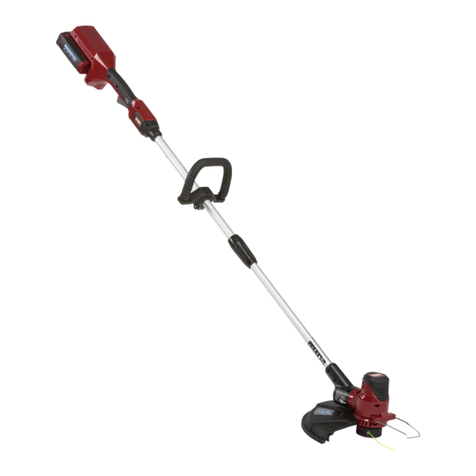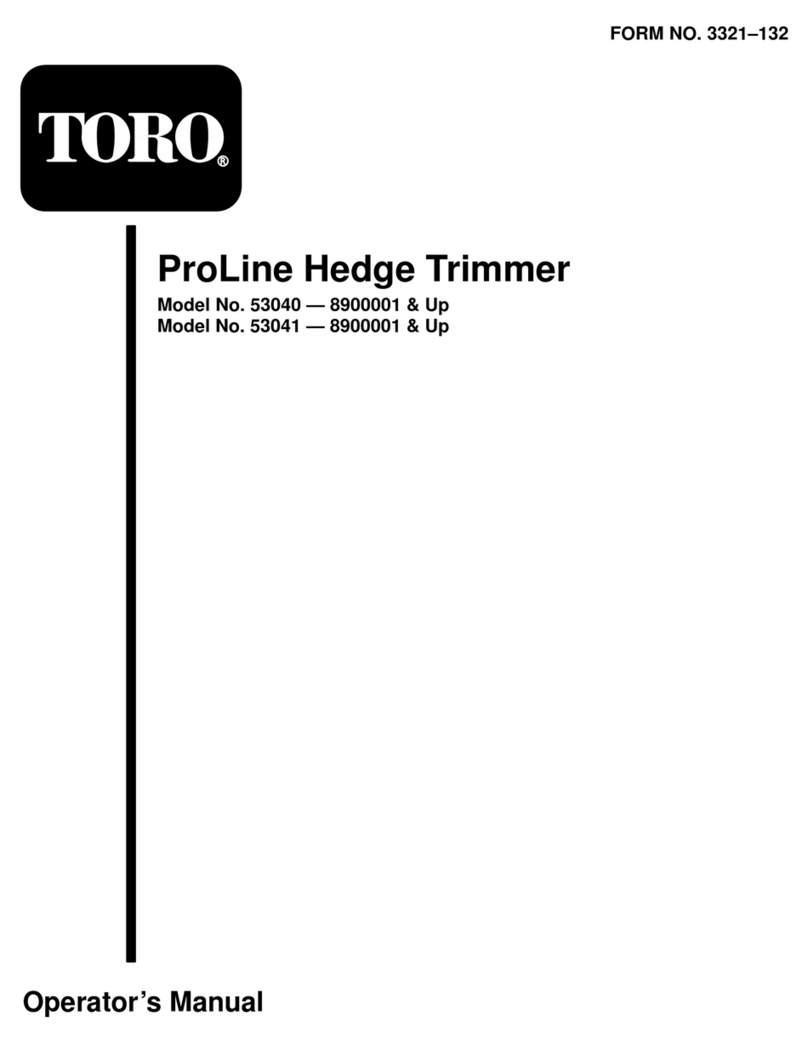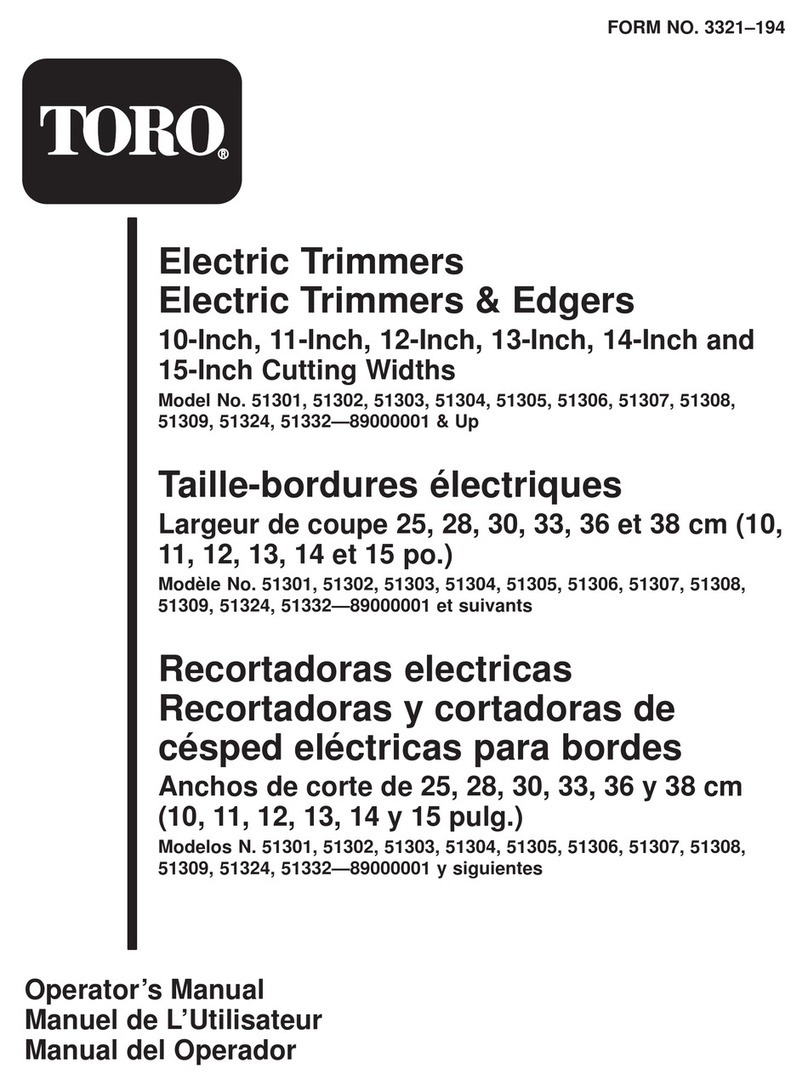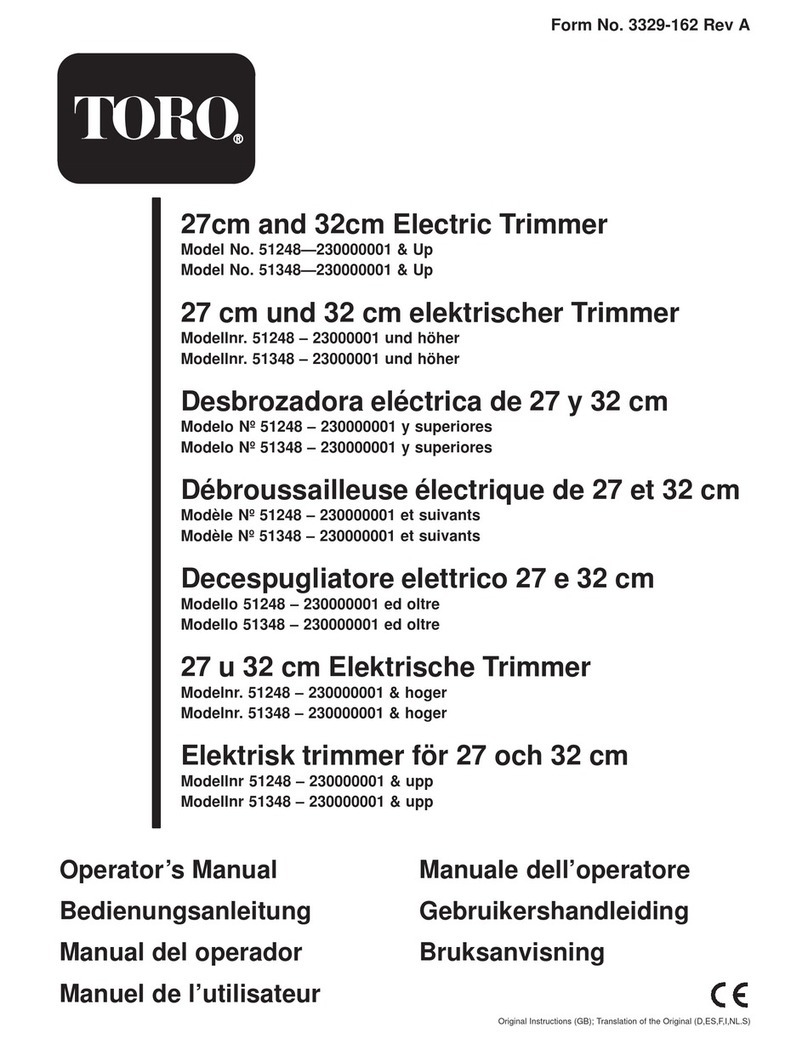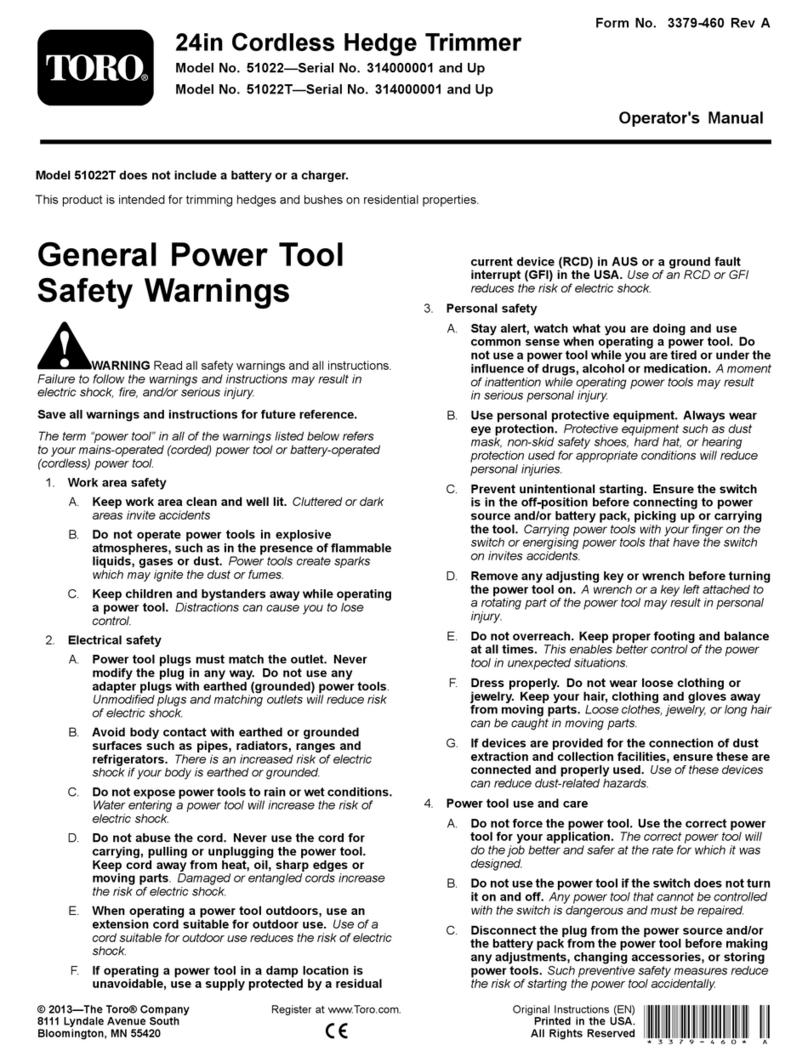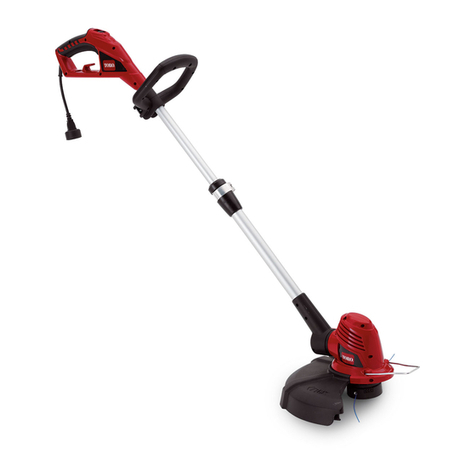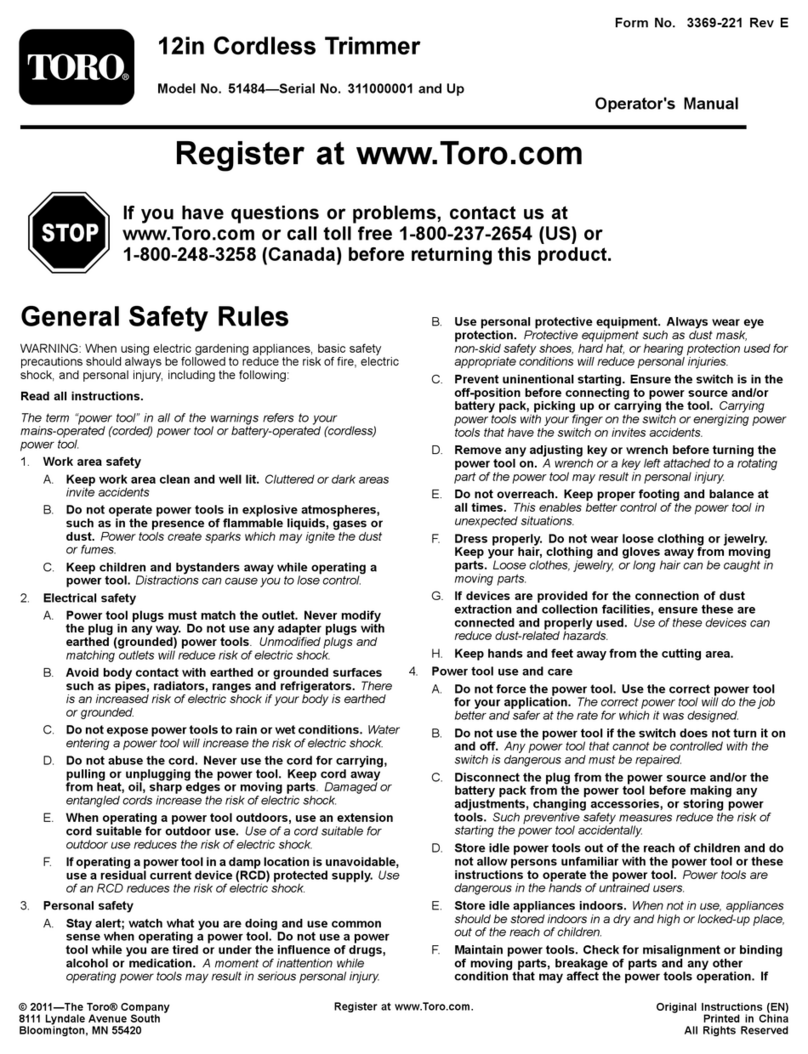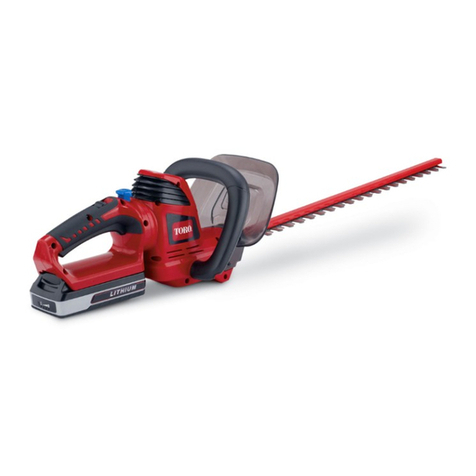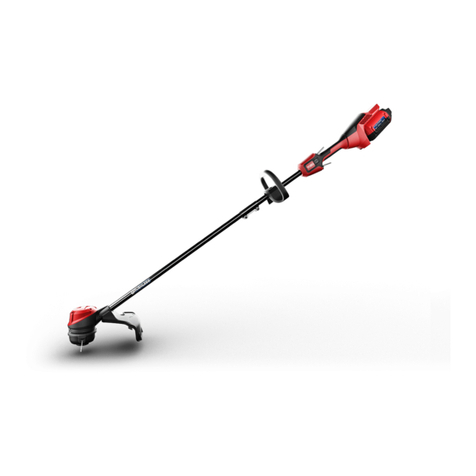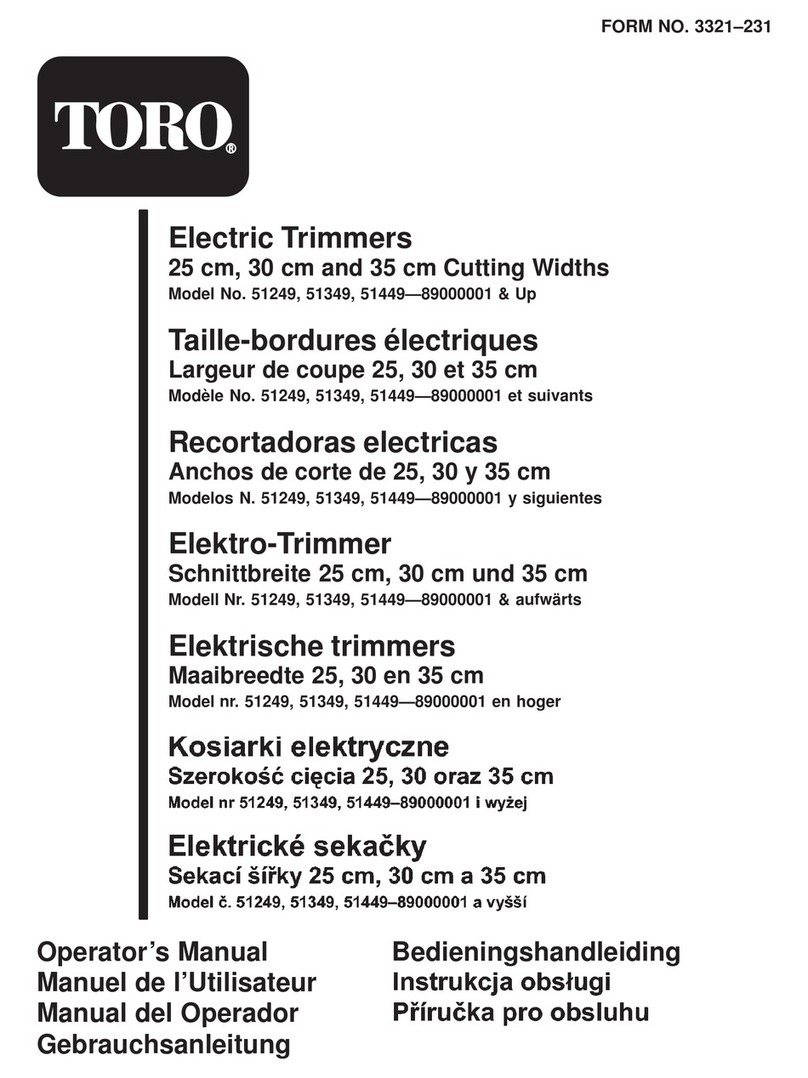
EN-3
POTENTIAL HAZARD
•Use of trimmer can cause electric shock.
WHAT CAN HAPPEN
•Electric shock can cause serious personal
injury or death.
HOW TO AVOID THE HAZARD
•Don’t use trimmer in rain, in wet locations,
or on wet hedges or shrubbery.
•Use only extension cords in good condition
and marked “suitable for use with outdoor
appliances” having electrical rating not less
than rating of trimmer.
•Do not use damaged extension cords.
Inspect cords periodically and replace if
damaged.
•Do not abuse cord.
•Never carry trimmer by cord.
•Do not yank cord to disconnect from
receptacles.
•Keep cord away from heat, oil, sharp edges,
and moving blades.
•WARNING – DO NOT USE WITHOUT
HANDLE AND GUARD.
•WHEN OPERATING YOUR TRIMMER
KEEP EXTENSION CORD BEHIND
TRIMMER. Never drape it over hedge being
trimmed.
•KEEP CHILDREN AWAY. Do not permit
children to contact trimmer or extension cord.
Keep children a safe distance from work area.
•USE TRIMMER PROPERLY. Use only for
trimming the type of shrub, growth, etc.,
described in the operating instructions. Do not
abuse trimmer.
•DON’T OVERREACH OR STAND ON
UNSTABLE SUPPORT. Keep good footing
and balance at all times. Do not use on a ladder.
Avoid overhead use where both hands can’t be
used. Hold unit as shown in Figure 6.
•AVOID UNINTENTIONAL STARTING OF
TRIMMER. Before plugging in trimmer, be
sure trimmer switch is off. Don’t carry trimmer
with finger on switch.
•DISCONNECT (UNPLUG) TRIMMER
FROM POWER SUPPLY when not in use,
before servicing, cleaning, etc.
•MAINTAIN TRIMMER WITH CARE. Keep
blades sharp at all times, and clean for best and
safest performance. Follow customer
responsibility instructions. Always use a clean
cloth when cleaning. Never use brake fluids,
gasoline, petroleum-based products, or any
strong solvent to clean your tool. Keep handles
dry, clean, and free from oil and grease.
•STORE IDLE HEDGE TRIMMER
INDOORS – When not in use, hedge trimmer
should be stored indoors in dry, and high or
locked-up place – out of the reach of children.
•DO NOT ATTEMPT TO REPAIR. For
service or repair call 1-800-237-2654 in the
United States. See that only original Toro
replacement parts are used.
•KEEP WORK AREA CLEAN. Cluttered areas
and benches invite accidents.
•PROTECT YOUR LUNGS. Wear a face or
dust mask if the operation is dusty.
•PROTECT YOUR HEARING. Wear hearing
protection during extended periods of operation.
•WARNING – To reduce the risk of electric
shock, use only with an extension cord intended
for outdoor use, such as SW-A, SOW-A,
STW-A, STOW-A, SJW-A, SJOW-A, SJTW-A
or SJTOW-A.
•EXTENSION CORD – Make sure your
extension cord is in good condition. When using
an extension cord, be sure to use one heavy
enough to carry the current your product will
draw. An undersized extension cord will cause a
drop in line voltage resulting in loss of power
and overheating. Follow the recommended cord







